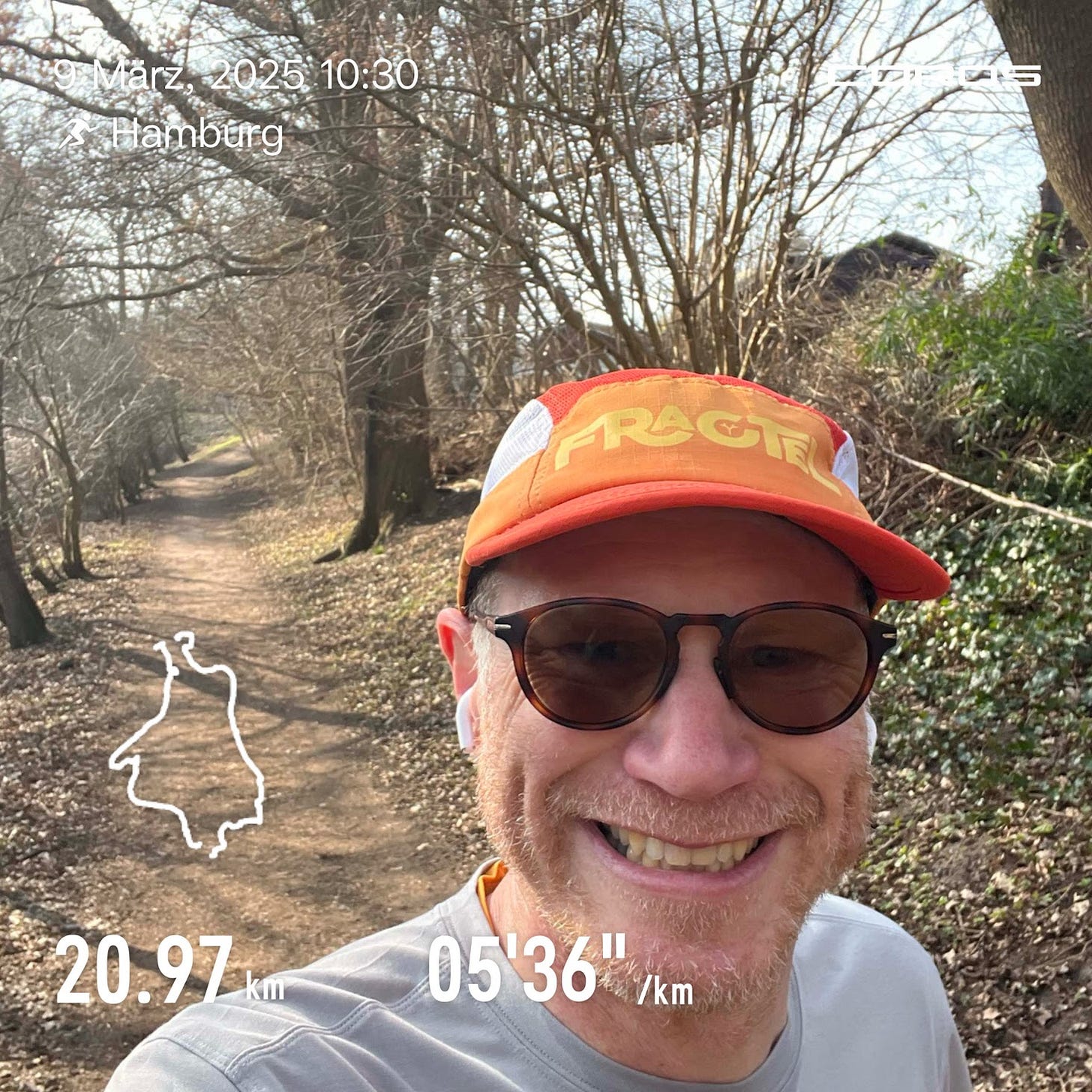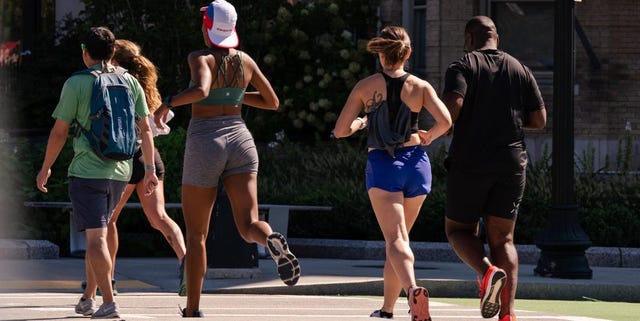Heya and welcome back to Five Things Running!
Last week spring has sprung in Northern Germany, at least for a few days. Even though I’d rather have a really cold winter like we used to do when I hiked barefoot uphill through the snow to school and back, I really like it when the sun comes out again and I can run in shorts and a longsleeve. Actually, this winter was so mild that I ran in shorts most of the time, also because my tights are falling apart and I didn’t think it was cold enough to justify a purchase. Anyhow, I had a good week of running, getting in almost 70km which included a nice long run on Sunday around the airport in Hamburg.
As spring is around the corner, what are your goals for spring? I had two runs penciled in and wanted to do one of them. Either the so called Supermarathon at the Rennsteiglauf, which is a 74km long trail race in Thuringia, or the North Sea Ultra, which is a 111km long race on the island of Sylt way up on the North Sea coast. Sylt is to Hamburg what the Hamptons are to New York City and I would really love to run across the island. But on both weekends I have family obligations and therefore I will need to find other idiotic running adventures to embark on this spring.
Anyhow, enough of my ramblings, here’s this week’s Five Things Running!
Jakob Ingebrigtsen interview: It is my duty to see how fast humans can go
“Ingebrigtsen might be one of the most famous people in Norway – a result both of his achievements and a hit fly-on-the-wall docu-series that tracked his life from pre-teen prodigy to Olympic champion – but is so part of the furniture in his birthplace that most locals barely bat an eyelid. He will run further intervals later in the afternoon and cover around 30km over the day. He has never missed a single training session and, as he makes the coffees, looks baffled by the idea that it is something anyone would consider.”
Spring Forward: Applying the Principle of Specificity
“The “principle of specificity,” also known as “SAID” (Specific Adaptations to Imposed Demands), is a fundamental concept in exercise science that states that the body will adapt in a highly specific manner to the type of training it is exposed to. In other words, the physiological adaptations that occur from exercise are directly related to the specific demands placed on the body.
This principle asserts that to improve performance in a particular activity, the training must closely mimic the specific characteristics of that activity in terms of movement patterns, energy systems and muscle groups used. This is implemented by various sports such as powerlifting and sprinting and team sports such as football, baseball and basketball and of course, endurance activities.
In essence, the principle of specificity means that if an athlete wants to improve performance in a particular sport or event, their training must closely simulate the conditions, skills and energy systems they will encounter during that event.”
3 Steps for running un-crazy
“I run for balance in my life. Not to add more stress.
Somewhere, I read the quote: "You shouldn’t try to win at your hobbies“ (I think this is by Brad Stulberg). I full-heartedly agree.
Still, I want to run longer distances and get faster. Not to win, but because it’s fun (to me, at least).
Social media can leave the impression that running must be stressful to be successful: scheduled runs, sticking to a plan, racing most weekends for a new PB, feeling bad for missing a run, and stressing out about gear, nutrition, and supplements.
Running like this would add stress to my life - not take stress away.
I think there is another way.
Running un-crazy.” - great idea, just shake things up and have fun!
Are You Running Too Slow on Long Runs?
“Long runs are an essential part of any race-training plan, whether you’re prepping for your first 5K or your tenth marathon. The distance you rack up during these sessions may become daunting, but good news: The pace doesn’t need to be. In fact, the perfect speed to maintain during your longer outings is one that feels super-relaxed. […]
Just how slowly, exactly, should you do your long runs? And is it possible to run too slow? We break down everything you need to know about the best pace for those long weekend runs, plus expert tips to stick to it.” - I usually run my slow long runs too fast, I don’t even know how to run too slow unless I race, then I’m always too slow, but that’s a different story, I guess.
Running influencers are promoting Advil, but at what cost?
“Instead of relying on NSAIDs as a quick fix, runners should focus on maintaining healthy training practices and proper recovery strategies—nutrition, hydration, mobility work and smart training adjustments—and remembering that pain is a signal that needs to be listened to.” - what a crazy and stupid idea. I remember back when I ran track & field in highschool, just 35 years ago, that a glass of water and an aspirin was a quick fix for nearly everything, but I thought we have reached a much better understanding of how our body works. Apparently, if money is involved, some people will promote nearly everything.
I’m grateful for the partners of Five Things Running: Acid Running, New Balance and Coros!
If you missed last week’s edition, you can read it here:
Now, go running!
— Nico
🏃🏻♂️








